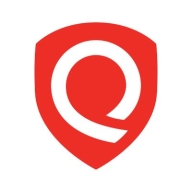

GitHub Dependabot and Qualys CyberSecurity Asset Management cater to software management and security. Dependabot is favored for its integration ease, while Qualys is noted for its comprehensive security, justifying its higher cost.
Features:Dependabot automates dependency updates, making software secure. It integrates seamlessly with GitHub, reducing manual tasks. Qualys offers asset visibility, vulnerability assessments, and detailed security insights. Dependabot concentrates on code management, while Qualys provides extensive security solutions.
Ease of Deployment and Customer Service:Dependabot is straightforward to set up with minimal configuration, fitting naturally into GitHub projects, making it easy for developers. Qualys is more complex but comes with a strong support system to ease deployment challenges, supported by comprehensive documentation and responsive assistance.
Pricing and ROI:Dependabot usually has lower setup costs, focusing on update automation rather than wide security assessments. It offers a good ROI by saving developers' time on dependencies. Qualys, though initially more costly, delivers significant ROI with its extensive security features and proactive vulnerability management, making it worth the investment for organizations needing detailed security.

GitHub Dependabot automates dependency management by creating pull requests for outdated packages, enhancing security and efficiency with minimal manual intervention.
GitHub Dependabot is invaluable for managing dependencies, offering automatic pull requests for updating outdated packages and minimizing manual efforts. Its seamless integration with workflows ensures minimal disruption, while frequent updates maintain code health and reduce technical debt. Dependabot's robust automation enhances reliability in dependency management, improving overall project security and performance.
What features does GitHub Dependabot offer?GitHub Dependabot is implemented across industries such as finance, healthcare, and technology, where maintaining secure and updated code is critical. Teams in these sectors rely on Dependabot to automate dependency management, thereby focusing more on innovation and less on manual updates. Dependabot's support for multiple languages and private dependencies makes it adaptable for diverse development environments, ensuring projects stay secure and up-to-date effortlessly.
Qualys CyberSecurity Asset Management provides advanced real-time asset visibility, dynamic tagging, and External Attack Surface Management. It streamlines asset discovery and management using cloud agents and IP-based scanning, enhancing risk management and software lifecycle tracking.
Qualys CyberSecurity Asset Management offers a comprehensive solution for managing asset inventories and tracking software lifecycle states. It facilitates network visibility and supports zero-day vulnerability solutions, enhancing security posture through efficient monitoring. Users benefit from its cloud-based interface, which provides in-depth asset configurations and insights. Key features include automated vulnerability scanning and unauthorized software management, reducing manual efforts. The platform also emphasizes the importance of timely remediation and ongoing risk mitigation across multiple environments. Despite its strengths, users note the need for enhanced integration with additional CMDBs beyond ServiceNow, as well as cost efficiency improvements. Requests also include better report customization, more scan control, and a simplified UI.
What are the key features of Qualys CyberSecurity Asset Management?In industries like finance, healthcare, and manufacturing, Qualys CyberSecurity Asset Management enhances asset control by offering visibility into hardware and software configurations. It aids in maintaining security compliance and identifying unauthorized software, crucial for sectors with strict regulatory requirements.
We monitor all Software Supply Chain Security reviews to prevent fraudulent reviews and keep review quality high. We do not post reviews by company employees or direct competitors. We validate each review for authenticity via cross-reference with LinkedIn, and personal follow-up with the reviewer when necessary.